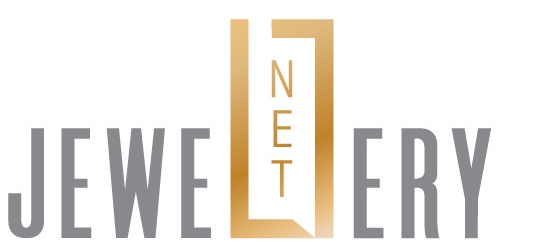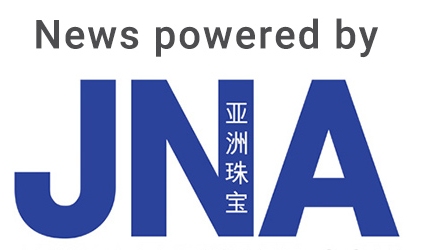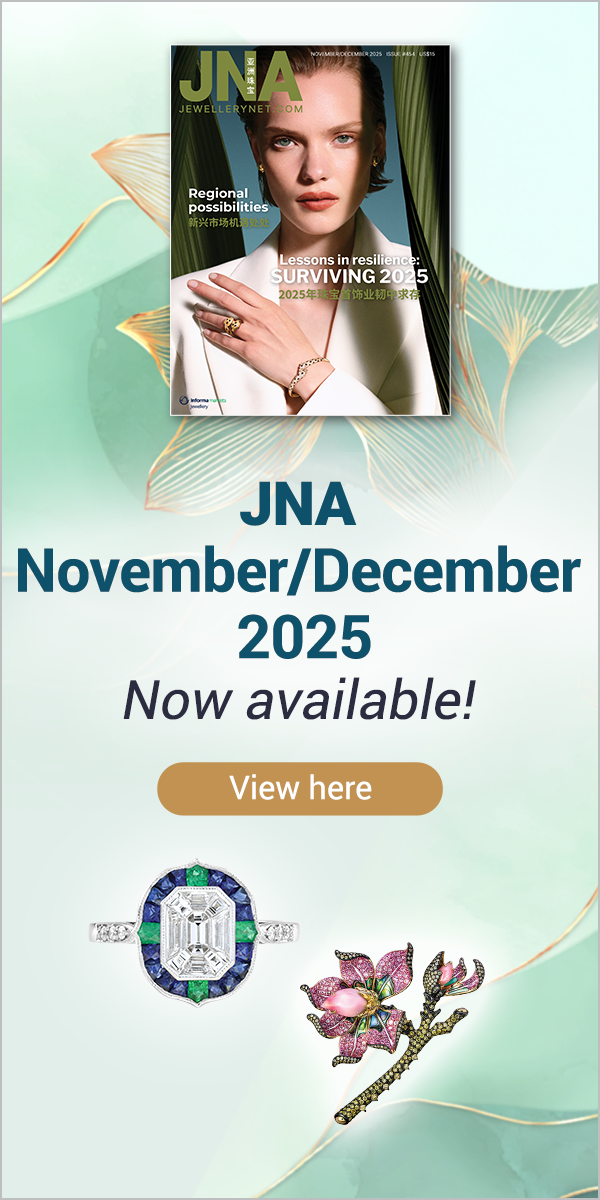Pritesh Patel, president and CEO of the Gemological Institute of America, outlines his strategic priorities and vision for the institute as it approaches its centennial in 2031.
(Transcript, edited for clarity)
JNA: What are your priorities as President and CEO of GIA?
Pritesh Patel: I am honoured to lead GIA at this pivotal moment in our industry. Our strategic priorities remain focused on building consumer confidence. And that confidence comes from research - everything that we do in research - it comes from our education and it comes with our laboratory services and instrumentation. So our strategic focus is going to remain what is at the heart of GIA. What made us successful is trust, and GIA is the most trusted organisation in this industry. So our focus is going to be ensuring that that consumer confidence remains very strong. We want to be where our clients and consumers are, so we are present in all the important markets throughout the supply chain, from Africa where the mining happens to the consumer markets like Hong Kong, China and the US. Last year, we opened our new laboratory in the emerging hub of Dubai. Southeast Asia is growing too.
JNA: What pressing issues face the gem and jewellery industry, and how can GIA help navigate these challenges?
Patel: The industry faces lot of macro issues today, from tariffs and geopolitical wars to laboratory-grown diamonds, among others. These disruptions create a lot of uncertainty. To maintain consumer confidence, GIA is providing education and clarity on laboratory-grown diamonds to the marketplace. When it came to the US tariffs, we took the opportunity to open up our services - offering a broader range of services in Hong Kong and Dubai when goods could not be shipped to the US. Another priority is bringing the industry together. GIA has a very unique role in the industry as an independent organisation and we can bring a lot of key players, stakeholders together to address challenging issues. Moving forward, we will continue to help the trade address issues through collaboration.
JNA: GIA recently made significant changes to how it evaluates lab grown diamonds. Why is this important?
Patel: Again, that goes back to consumer confidence. There has been confusion in the market around laboratory-grown diamonds. GIA created the 4 Cs system decades ago for natural diamonds. The rarity factor of colour and clarity of what nature produces is continuum from the scale. Laboratory-grown diamonds however fall in a very small zone – 95 per cent of these stones are in the DEF categories and VVS and above – hence the 4Cs do not apply anymore. Our role is to ensure that the consumer knows there is a distinction between laboratory-grown diamonds and natural diamonds, and they know what they are purchasing. As an independent body, we at GIA believe consumers will want both – natural and laboratory-grown diamonds will both have a place in the market.
JNA: What role do you see technology such as artificial intelligence (AI) playing in GIA operations?
Patel: Technology is going to play a very significant role. Gen AI is revolutionising the world, not only in the gems and jewellery industry but every single sector. New technologies bring great opportunities. GIA actually started using AI in our grading process in 2017, collaborating with IBM Research to develop the AI-based system on clarity grading that we use to this day. We also use AI in origin determination of coloured stones and offer a course on applying AI for jewellery design. Technology plays a tremendous role in our education courses too since it enhances the experience of our clients and consumers alike. GIA’s foundation is rooted in research, with technology playing a tremendous role in our further growth.
JNA: What are your thoughts on traceability?
Patel: Traceability is a very important part of consumer confidence. If people want to know where their coffee come from, they are going to want to know where their diamonds come from. Sustainability is a big part of our supply chain. We have been offering the Diamond Origin Report since in 2017, 2018, provide source verification services and recently announced our equity stake in Tracr. We believe the industry needs to come together on an independent platform and see Tracr providing that for the trade, with GIA playing a significant governance role. Once again, we get to bring key stakeholders throughout the supply chain together and support Tracr so we can transparency to consumers.
JNA: Please provide an update on GIA’s partnership with eBay to expand your jewellery grading services.
Patel: We see sustainability in secondary market where there is a substantial wealth transfer, specifically in the US, as trillions of dollars is going to pass from one generation to the next. A lot of secondary-market jewellery is coming back into the market, with eBay being a major platform for such transactions. Buyers on such platforms want to be assured that their purchases have been certified and verified by GIA. This provides tremendous opportunities for us, given the significant wealth transfer about to occur. GIA can provide unique services for people seeking to know the quality and value of their jewellery and how they can redesign and transform these.
JNA: How is GIA preparing the next generation of jewellers for an increasingly digital and sustainability focused marketplace?
Patel: We are coming up with many new programmes in education. Our Next Gem programme, consisting of short curriculums with one- to two-hour courses, is ideal for retail staff. One of the biggest concerns for retailers is bringing new staff up to speed on industry knowledge. Next Gem will teach the main skills and knowledge the need to service clients. Another area of focus is technology. I mentioned our course on AI for jewellery design. We also tackle AI and technology in our bench jeweller programmes as well as courses for people seeking to develop content. We want to equip new generations coming into the trade with skillsets they need for creativity and entrepreneurship to thrive.
JNA: How is GIA supporting retailers?
Patel: Retailers are one of the most important parts of the supply chain. They are the 18 inches between the consumer and the trade. GIA’s role is to ensure that we are providing them all the support and the tools necessary behind the counter. At the September Fair in Hong Kong, we had an Emerald Experience specifically to educate retailers. That way, when they engage with consumers, they know the history and details of the gemstone. Since they know the science behind the stone, they can simplify this and convey it to the consumer while highlighting its emotional value in the purchase. So we play an important part in shaping the narrative through education.
JNA: Please tell us about your management and leadership style.
Patel: I believe in servant leadership. My management and leadership style is grounded in collaboration. We work in an industry where people are very passionate about what they do. It is a very niche but very close-knit industry. I see a lot of opportunities to collaborate; GIA can play a pivotal role in bringing the trade together to address challenges. GIA is turning 100 in 2031. I want our institute to be future-ready, anchored in science, powered by technology and trusted by the consumer globally. That is my vision as we move towards our Centennial.
JNA: What are you looking forward to in your new role?
Patel: I am looking forward to build on the legacy of leadership. At the Converge symposium in Carlsbad, there was a Legends panel with four legends of this industry in Tom Moses, Jim Shigley, John Koivula and Shane McClure. Combined, that is more than 180 years of experience which cannot be replicated. I am fortunate to have that foundation and want to build on that legacy we have. As I mentioned, continuously anchored in science, but user powering by technology with a lot of innovation and then through our research and knowledge bring the trust in the industry and to the consumer.
JNA: What can we expect from GIA with you at the helm?
Patel: You are going to continue to experience the deep rooted in science, a keener focus on innovation, speed and agility and a lot of collaboration as we move forward to bring the trade together to solve the big challenges facing to our industry. I know these are difficult times but I am extremely optimistic about the future. Our best days are yet to come.









